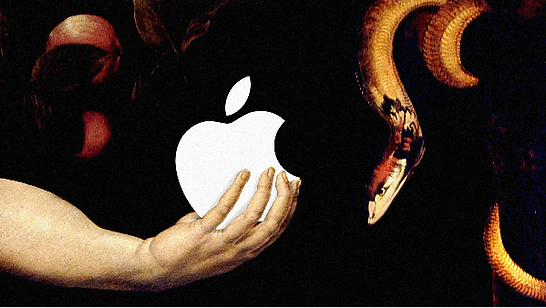Unveiling the Dark Side of Apple Company: Behind the Shiny Logo
Table of Contents
Apple is more than a brand; it’s a cultural phenomenon, an icon of innovation, and a benchmark in the tech world. Apple devices are revered for their sleek designs, user-friendly interfaces, and cutting-edge technology. For many, owning an Apple product represents status, creativity, and progress. But as with all major corporations, there’s more beneath the surface. This article explores the darker side of Apple Company — the ethical dilemmas, environmental concerns, and labor issues that challenge its glossy image.
Read on to understand the realities that often go unmentioned when discussing one of the world’s most beloved brands.
Why We’re Drawn to Apple Company’s Products
Apple’s Irresistible Allure
Apple has a unique way of building connections with its customers. It’s more than just technology; it’s about an experience, an ecosystem that keeps users loyal for life. You might have noticed that using one Apple product makes it tempting to buy others, whether it’s the seamless integration between your iPhone, iPad, and Mac or the intuitive ease with which they all sync.
- Emotional Connection and Branding: Apple’s advertising strategy is about much more than selling products. It connects on an emotional level. The company has mastered the art of associating its products with creativity, freedom, and a certain “cool factor.” They’ve made their brand synonymous with status, innovation, and simplicity.
- Commitment to Quality: The quality of Apple’s products is undeniable. They’re built to last, which is partly why so many of us trust the brand. The Apple ecosystem is smooth, refined, and keeps users hooked, making it hard to switch to other brands. This dedication to a high-quality user experience has allowed Apple to build a powerful, loyal customer base.
- Revenue and Customer Loyalty: Apple’s revenue numbers are a testament to its loyal following. In 2023, the company generated over $394 billion in revenue, demonstrating just how much people are willing to pay for its products. But for all its success, Apple’s path hasn’t been as pristine as its brand might suggest.
Apple company Controversial Labor Practices
The Hidden Cost of Manufacturing
When you purchase an Apple product, it’s easy to forget the complex, often troubling supply chain that makes it possible. Apple doesn’t manufacture its products in the U.S.; instead, it relies heavily on international suppliers, primarily in China, to assemble its devices.
- Overseas Partnerships and Factory Conditions: Many of Apple’s products are made in factories overseas, where labor practices are often criticized. One of the most famous examples is Foxconn, a major Apple supplier known for grueling work conditions. There have been numerous reports of long hours, low wages, and even worker suicides due to the extreme pressure at these facilities.
- Child Labor in the Supply Chain: Another troubling aspect of Apple’s production is its connection to child labor in cobalt mining. Cobalt is a vital component in lithium-ion batteries, the type used in almost every Apple device. Investigations revealed that child labor is often involved in cobalt mining in the Democratic Republic of Congo. This is a challenging issue that Apple is aware of and has committed to addressing, but the problem remains far from resolved.
- Source-Backed Evidence: Reports from reputable news sources, like The Guardian and BBC, shed light on the human cost of Apple’s products. As a consumer, it’s worth knowing that the devices that make your life easier often come at a high cost to the workers involved in their production.
Apple Company and the Environmental Impact
The Environmental Cost of Innovation
Apple’s environmental policies often position the company as a leader in sustainability. They’ve pledged to reduce carbon emissions, adopt renewable energy sources, and improve product recyclability. Yet, the reality isn’t as green as it may seem.
- E-Waste and Short Product Cycles: Every year, Apple releases updated versions of its products, from iPhones to MacBooks. This cycle creates e-waste, as consumers replace their old devices with the latest model. Apple products are also notoriously hard to repair, which pushes users to buy new devices instead of fixing old ones.
- E-Waste Statistics: Globally, e-waste has become a severe issue, and Apple contributes to it. In 2021 alone, around 53.6 million tons of e-waste was generated worldwide, with tech giants like Apple having a sizable role in this figure.
- Green Initiatives vs. Reality: Although Apple claims to be environmentally responsible, the actual production process often relies on non-renewable resources. For instance, a large part of Apple’s supply chain still relies on fossil fuels. While the company has made strides in adopting renewable energy for its operations, it’s only a small part of the entire production chain.
- Mixed Results in Sustainability Efforts: While Apple reports that 100% of its corporate operations are powered by renewable energy, only 30% of its supply chain achieves the same. This discrepancy raises questions about Apple’s commitment to true sustainability.
Privacy: How Secure is Your Data with Apple company ?
Apple’s Privacy Promise vs. Reality
Apple has positioned itself as a champion of privacy in recent years, taking a firm stance on protecting user data. But does Apple truly protect your data, or is it another part of the brand narrative?
- The Privacy Promise: Apple’s messaging around privacy is strong. They emphasize that “what happens on your iPhone, stays on your iPhone.” Unlike other tech giants, Apple claims not to rely on user data for profit, which has appealed to many privacy-conscious users.
- Data Collection and Government Cooperation: However, Apple still collects a significant amount of data on its users. iCloud, for instance, stores photos, contacts, and files in the cloud. While Apple encrypts much of this data, reports suggest that the company may cooperate with government demands for information when legally required.
- Controversial Incidents: There have been cases where Apple’s commitment to privacy has been called into question. For instance, Apple has been criticized for complying with the Chinese government’s data localization demands, which involve moving Chinese users’ data to local servers. These actions raise questions about the limits of Apple’s privacy promises.
The Right to Repair — Apple Company Fight Against Repairability
Making Repair Harder
When it comes to repairing your own devices, Apple isn’t exactly on your side. The company has consistently lobbied against the Right to Repair movement, which advocates for consumers’ rights to fix their devices without manufacturer intervention.
- Limited Repair Options: Apple’s devices are designed in a way that makes them challenging to repair. Special tools are often needed, and parts are hard to source independently. As a result, you’re left with few options beyond going to an Apple Store, which is usually expensive.
- Consumer Frustration and Financial Impact: Apple’s reluctance to support the Right to Repair has led to frustrations. For instance, an iPhone screen replacement can cost as much as $300, while repairing a MacBook can be even more expensive. This means many users are pushed to buy new products rather than repairing old ones, leading to unnecessary waste and higher costs for consumers.
- Environmental Impact: Apple’s stance against repairability also impacts the environment. If fewer people can repair their devices, more devices end up as e-waste. Supporting Right to Repair would help Apple align its environmental message with its actual practices.
Weighing Apple’s Innovations Against Its Flaws
Apple is, without a doubt, one of the most innovative companies in the world. It has transformed the way we use technology, pioneering advancements in mobile devices, computers, and digital media. But as we’ve seen, there are real issues behind the scenes. From labor practices to environmental impact, Apple’s operations often conflict with the brand’s carefully curated public image.
As a consumer, your choices matter. You can decide how much weight to give these issues when choosing your next device. You might also want to explore repair options or support initiatives that advocate for improved corporate responsibility. Apple may be a leader in technology, but that doesn’t mean we should ignore the areas where it falls short.
What about donald trump ?
Frequently Asked Questions (FAQ)
Q: Why does Apple face criticism for its labor practices?
Apple’s reliance on overseas manufacturers, where labor practices are often questionable, has led to criticism. Workers in some Apple supplier factories have reported difficult conditions, long hours, and low wages.
Q: Does Apple contribute to the global e-waste problem?
Yes, Apple’s frequent product releases and limited repairability contribute to electronic waste. Apple devices are hard to repair, and the cost of fixing them can be high, which leads many users to replace their devices instead.
Q: Is my data truly private with Apple?
Apple claims to prioritize privacy, but it still collects significant data on its users. While the company encrypts much of this data, there have been incidents where it has cooperated with government requests for user information.
Q: Why doesn’t Apple support the Right to Repair?
Apple prefers users to rely on authorized repair services rather than fixing devices themselves, which ensures quality but raises costs and limits options. This has led to criticism from consumer rights advocates and those concerned about e-waste.
Conclusion and Call to Action
Apple’s products are undeniably influential, changing how we communicate, create, and live. But the ethical, environmental, and privacy issues surrounding the company remind us that even the most iconic brands have flaws. As consumers, staying informed empowers you to make choices that reflect your values. By understanding both the innovations and the issues within Apple’s operations, you can decide where you stand and make purchasing decisions that
align with your ethics.
Let your voice be heard: Consider supporting the Right to Repair movement or choosing repair options that reduce waste. When possible, share information with others to encourage transparency and responsibility in tech. After all, the power to create change begins with informed choices.


